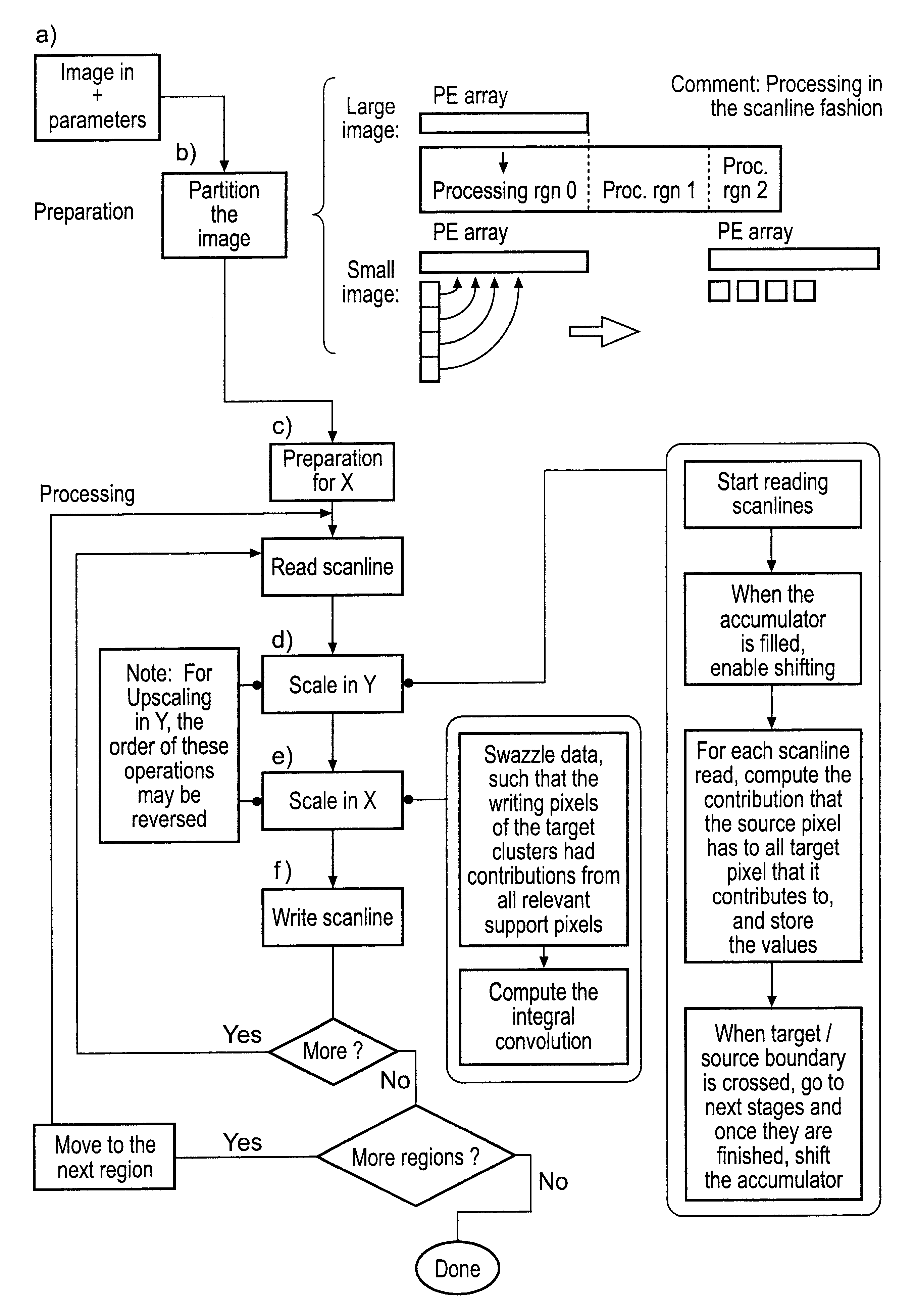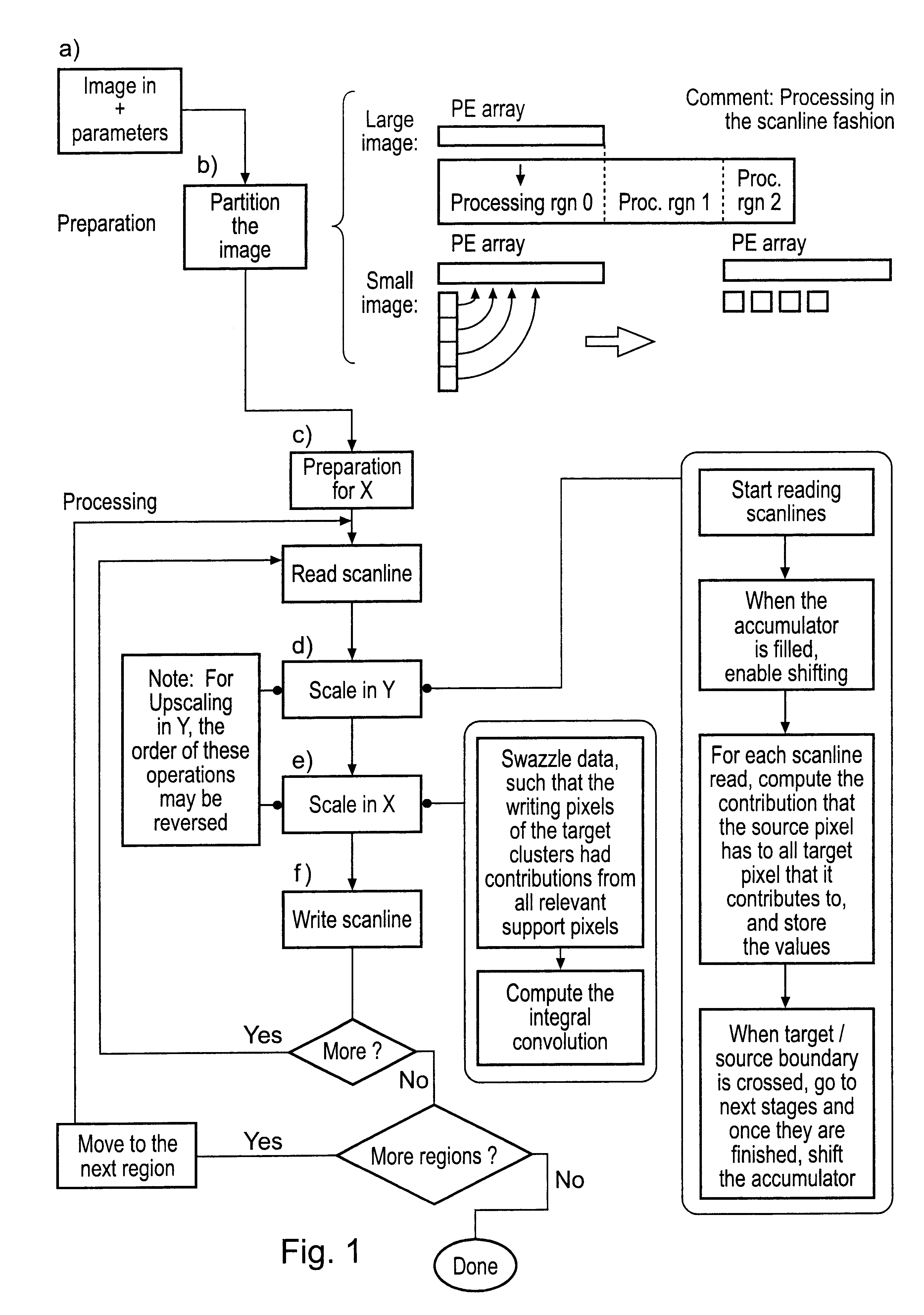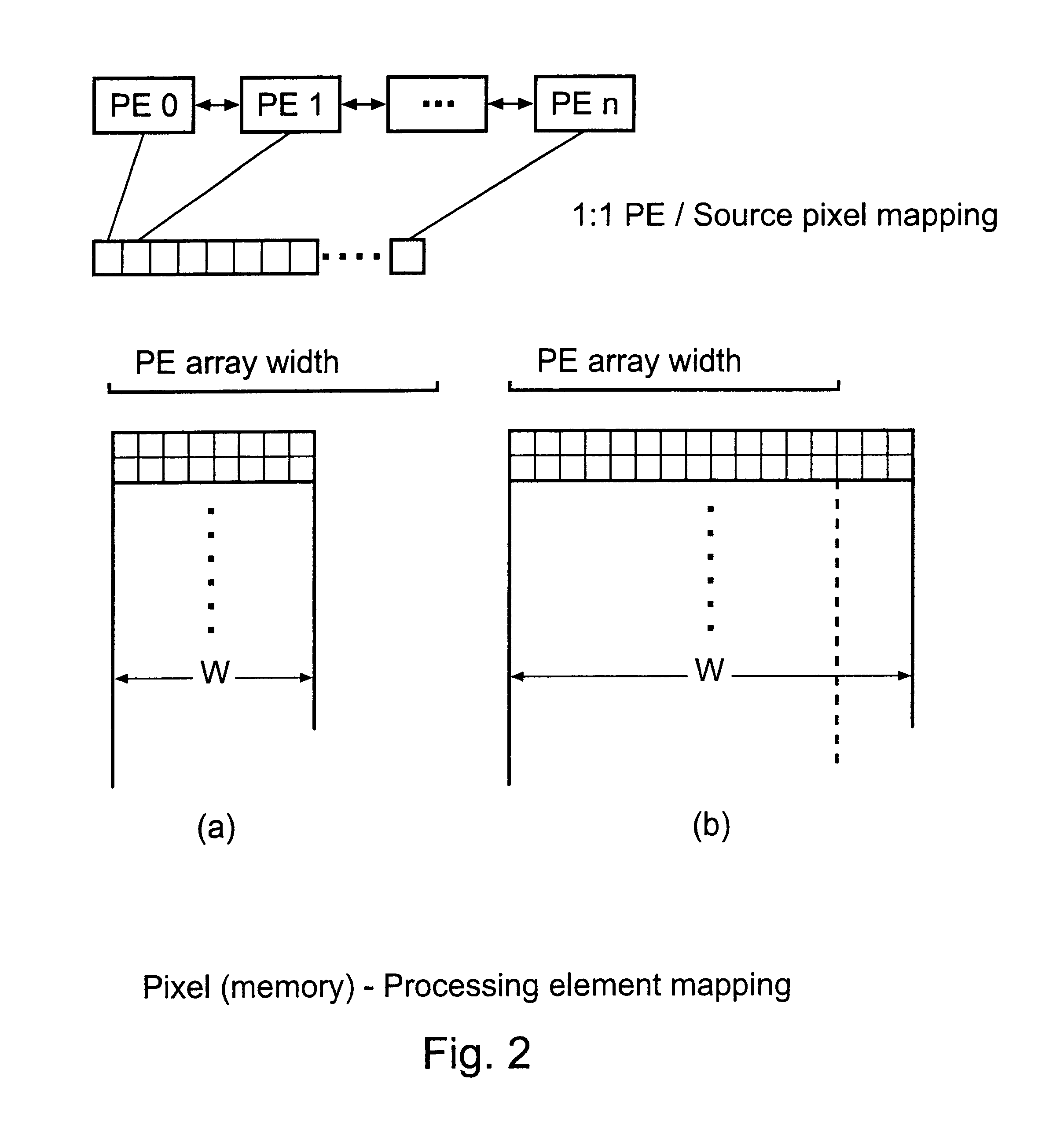Image scaling
a technology of image and image, applied in the field of image scaling, can solve the problems of loss of information contained in the image, computationally too time-consuming fourier transform, and poor image quality
- Summary
- Abstract
- Description
- Claims
- Application Information
AI Technical Summary
Benefits of technology
Problems solved by technology
Method used
Image
Examples
Embodiment Construction
As an example let us consider downscaling a 32-bit RGBA image using an SIMD device consisting of 1536 processing elements (PEs) each with 2 k of local DRAM memory, arranged in six blocks with a linear intercommunication network connecting the nearest neighbouring PEs and incorporating an Embedded Processing Unit (Epu) acting as a controller for the entire chip as well as a separate channel controller unit enabling one to overlap I / O and computation at the array level.
The choice of the input format for this example was dictated by the ease of the address computation and extraction of pixel data from the packets being transferred.
Let us assume that the source image is located in an external (not on-chip) memory and is directly accessible by our SIMD device. The act of reading or writing data from / to external memory to the on-chip memory will be referred to as a `channel operation`.
One of the main design goals of the algorithm was to minimize the number of channel operations required b...
PUM
 Login to View More
Login to View More Abstract
Description
Claims
Application Information
 Login to View More
Login to View More - R&D
- Intellectual Property
- Life Sciences
- Materials
- Tech Scout
- Unparalleled Data Quality
- Higher Quality Content
- 60% Fewer Hallucinations
Browse by: Latest US Patents, China's latest patents, Technical Efficacy Thesaurus, Application Domain, Technology Topic, Popular Technical Reports.
© 2025 PatSnap. All rights reserved.Legal|Privacy policy|Modern Slavery Act Transparency Statement|Sitemap|About US| Contact US: help@patsnap.com



